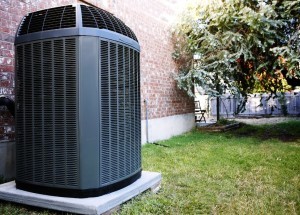 Carefully placing an AC unit in Tempe, AZ is a very important decision and not one that should be taken lightly. You have to keep a lot of things in mind, or you could find yourself handing out a lot of money for a very little reward. If you’re not a trained technician or have much of a background in HVAC technology at all, it may feel like you’re over your head. Don’t worry. Following these tips on outside air conditioner placement in Tempe AZ is a great way to make sure you’re making an informed decision that you won’t regret later.
Carefully placing an AC unit in Tempe, AZ is a very important decision and not one that should be taken lightly. You have to keep a lot of things in mind, or you could find yourself handing out a lot of money for a very little reward. If you’re not a trained technician or have much of a background in HVAC technology at all, it may feel like you’re over your head. Don’t worry. Following these tips on outside air conditioner placement in Tempe AZ is a great way to make sure you’re making an informed decision that you won’t regret later.
Choose a Spot with Easy Access for Service Workers
Accessibility for an air conditioning installation company in Tempe is one of the most important aspects to keep in mind when finding a location for your outdoor air conditioning unit. Obviously, it should be in a place that’s easy to access for any technician that may need to service your AC, but the unit itself shouldn’t be in such a conspicuous position that it becomes an eyesore. There’s no hard rule here. As long as a worker can get to the outdoor air conditioning unit without breaking any bones or damaging any equipment, you’re probably in the clear.
Decide between a Rooftop AC Unit and Side Yard AC Unit
This is another major decision you’ll have to make. Most people are used to the bulky outdoor unit in the side yard that pumps hot and cold air into your house, and there’s nothing particularly wrong with installing a side yard AC unit. Rooftop air conditioners, by comparison, can be a bit more beneficial over time but are a little more expensive to install. Due to their placement, however, a rooftop AC unit can save on energy costs by taking advantage of the fact that warm air naturally rises. A rooftop air conditioner also makes maintenance a lot easier by centralizing the different parts of the total AC system into a single unit.
Regardless of where you choose to put the AC unit, as long as it’s placed in an open space with a free flow of air and is set on a rigid, flat surface, you’ll probably be just fine. Another thing to keep in mind is keeping your outdoor AC unit away from spots where standing water could accumulate.
Install the AC Unit on the Most Shaded Side of the Home
This final tip seems simple enough, but many people tend to forget that your air conditioner unit should always be installed on the side of your home with the most shade. Whether you choose to place it on the roof or in the side yard, you should do your best to keep the air conditioner out of the sun whenever possible. Over time, sun damage can overheat your unit and cause it to break down steadily. Especially for outside air conditioner placement in Tempe, AZ where the sun can be unforgiving, keeping your air conditioner cool will go a long way to keeping you cool too.
_________________________________
Contact the Tempe air conditioner installation experts at Scottsdale Air Heating & Cooling to learn more about where you should place your AC unit. Email us or call 480-359-7141 now!
Read related articles:
- Is It Smart to Install Zoning Air Conditioning in Tempe?
- Using a Tempe Home Air Conditioning BTU Calculator [Tips]
- What Is the Best Air Conditioning Unit for Tempe Homes?
3 Tips for Outside Air Conditioner Placement in Tempe AZ
 Having a working air conditioning unit in Tempe is much more than a convenience: it’s an outright necessity, especially when it really starts to get hot. Having only a single AC running throughout the house, however, may not be the answer to your heating and cooling needs. Houses, after all, don’t get equal amounts of sunshine throughout the day, and due to insulation or circulation issues, not all parts of the house heat and cool at the same rates. In situations like these, a
Having a working air conditioning unit in Tempe is much more than a convenience: it’s an outright necessity, especially when it really starts to get hot. Having only a single AC running throughout the house, however, may not be the answer to your heating and cooling needs. Houses, after all, don’t get equal amounts of sunshine throughout the day, and due to insulation or circulation issues, not all parts of the house heat and cool at the same rates. In situations like these, a  Any resident of Tempe knows how hot it can get in Arizona, and it will only get hotter if your air conditioning unit is not up to the task of cooling your home. More often than not, your home AC unit just might not be big enough to get the job done, which begs the question, just how big does your AC need to be? For the inexperienced, this can be a hard question to answer.
Any resident of Tempe knows how hot it can get in Arizona, and it will only get hotter if your air conditioning unit is not up to the task of cooling your home. More often than not, your home AC unit just might not be big enough to get the job done, which begs the question, just how big does your AC need to be? For the inexperienced, this can be a hard question to answer.